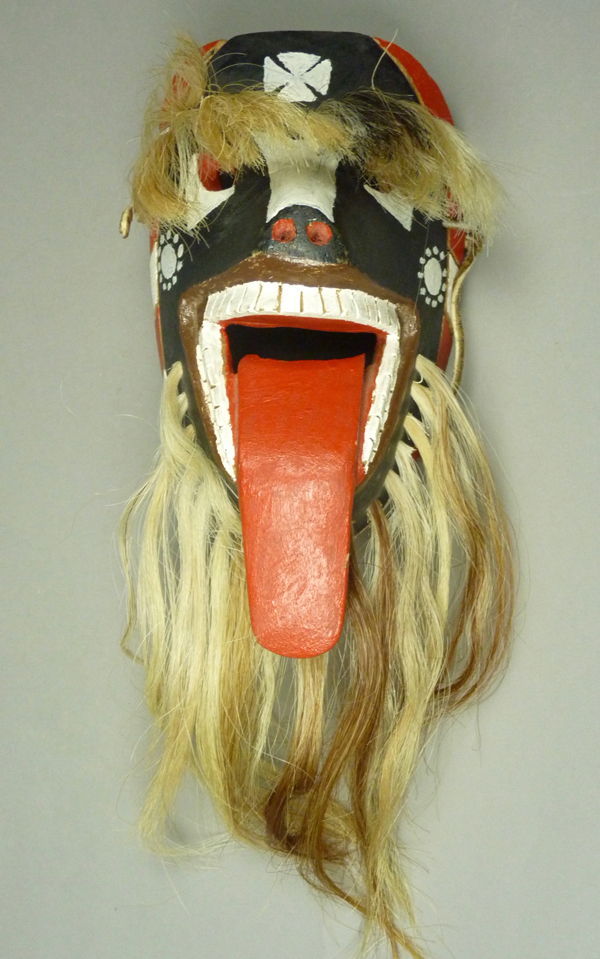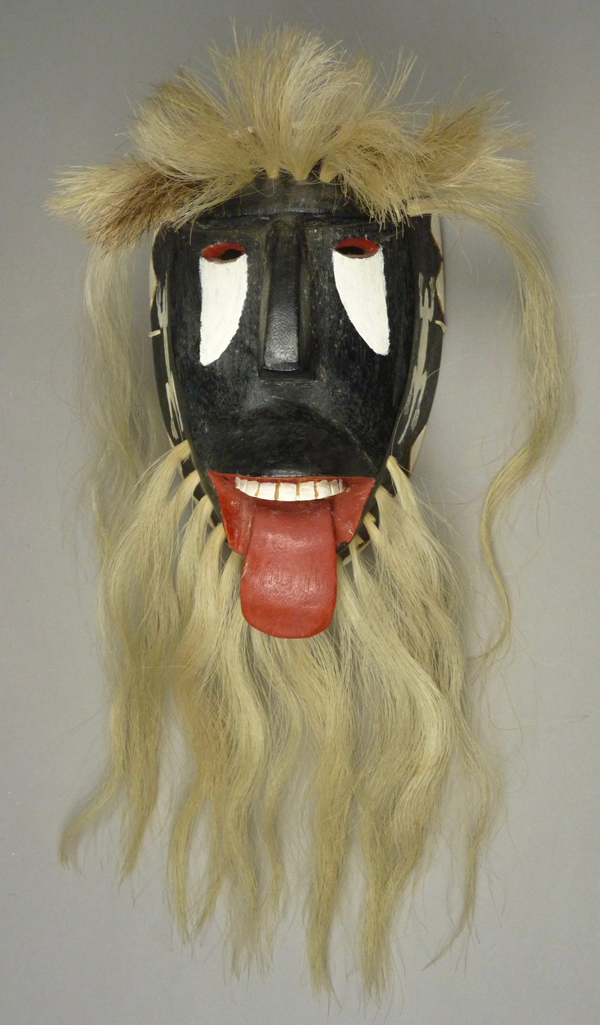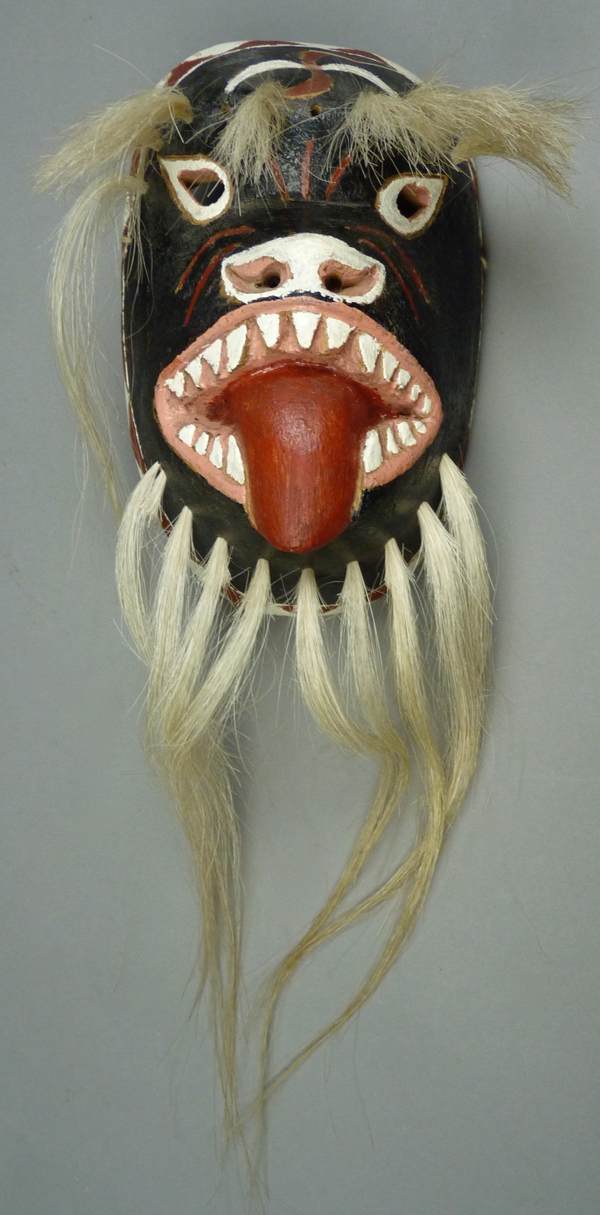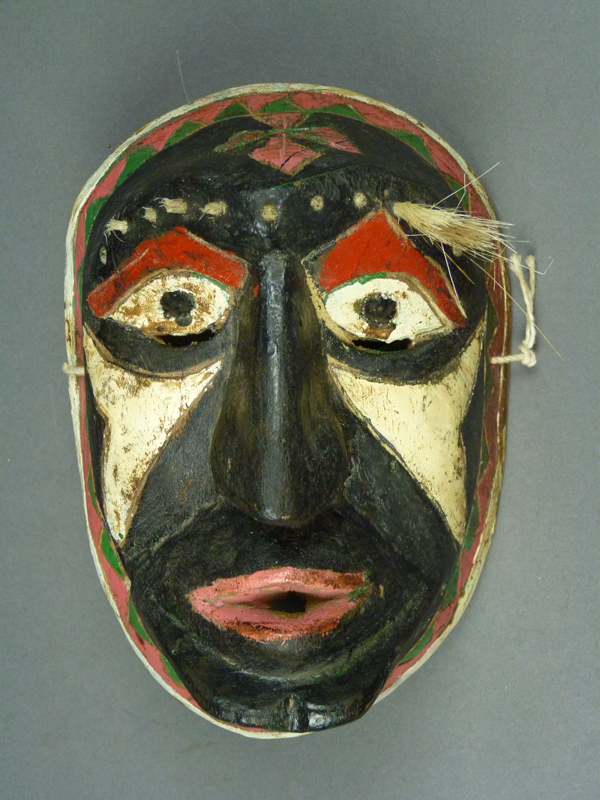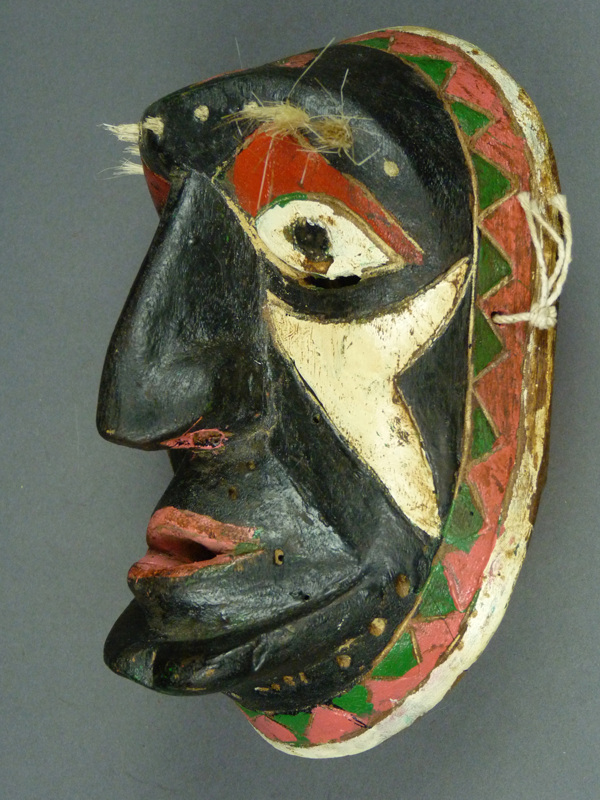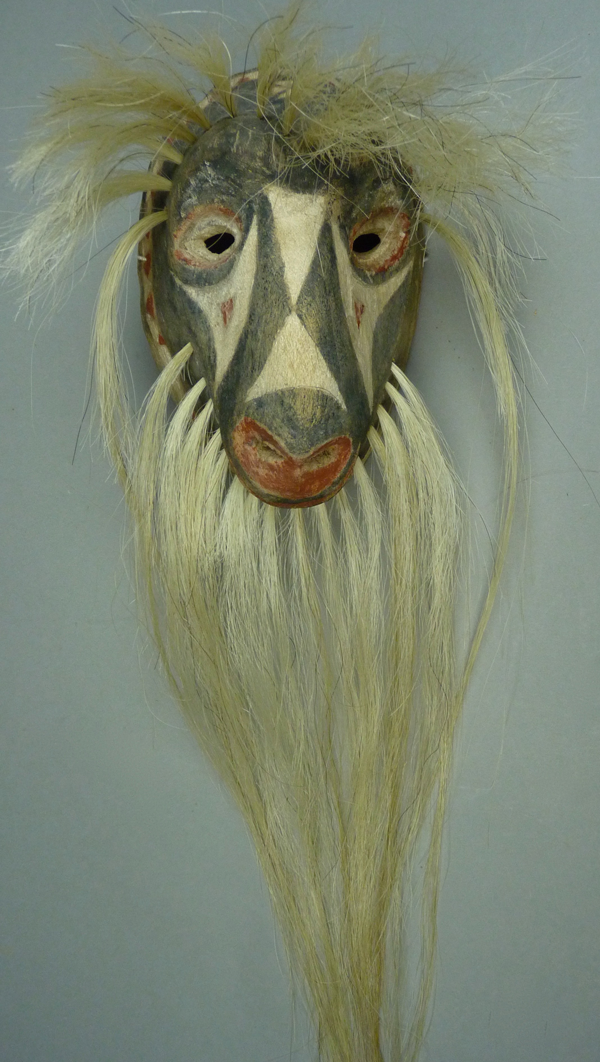Today I will show you a few animal masks by Hilario Álvarez Mendoza. The first is one that I purchased from the Old Pascua Community Center in Tucson, Arizona, in 2013. I was told that this mask had been worn by children from the Old Pascua community who were learning to dance. When you see the back, it will be clear that quite a lot of learning had taken place. This mask has the face of a dog.
Like the masks in last weeks post, this one certainly has features that might remind you of the masks of Antonio Bacasewa, Hilario’s step-father. The forehead cross and the freehand designs on the cheeks are both typical of Antonio’s style. Furthermore, the hair bundles are pegged. The extended tongue, on the other hand, has an abrupt angular bend while those of Antonio bend more softly.

